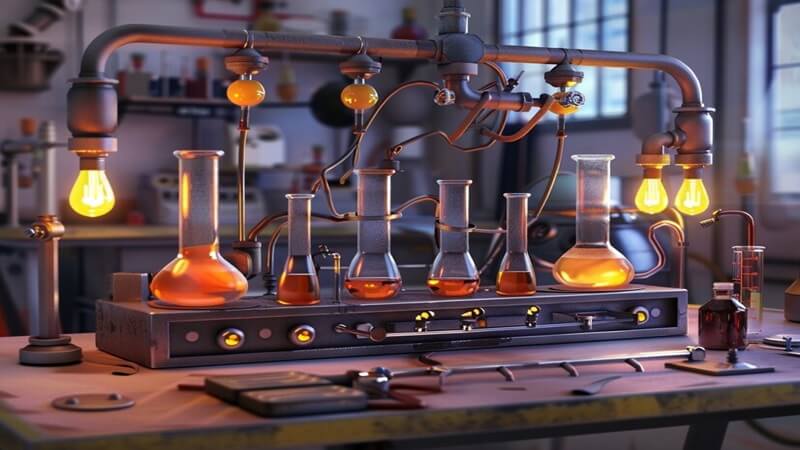Table of Contents
- Introduction to Hot Melt Extrusion (HME)
- How HME Works
- Benefits of Amorphous Solid Dispersions
- Common Misperceptions in HME
- Challenges and Solutions in HME
- Innovations in HME Technology
- The Impact of HME on Patient Outcomes
- Conclusion
Introduction to Hot Melt Extrusion (HME)
Hot Melt Extrusion (HME) is a cutting-edge technology widely used in the pharmaceutical industry to create amorphous solid dispersions. These dispersions enhance the solubility and bioavailability of poorly water-soluble drugs, leading to more effective treatments. The efficiency of hot melt extrusion in drug formulation has made it a popular choice among pharmaceutical companies looking to optimize drug delivery systems. HME improves drug performance and offers a robust pathway for developing complex drug formulations.
How HME Works
HME involves melting a drug and a polymer together under controlled temperatures. This process creates a homogeneous mixture that stabilizes the amorphous state of the drug, preventing crystallization and improving its dissolution rate. Once the drug is melted and dispersed within the polymer matrix, it can be molded into various dosage forms, such as tablets or capsules. It is crucial to modify factors such as temperature, screw speed, and feed rate to uphold product quality and consistency across the entire process.
Steps in the Hot Melt Extrusion (HME) Process
- Preparation: Select suitable polymers and drug substances, ensuring their compatibility. This step is vital for a successful extrusion process, as the chosen materials must interact harmoniously to achieve the desired outcome.
- Feeding: Introduce the selected ingredients into the extruder with precision. Accurate feeding is essential to maintain the correct proportions of drug and polymer, ensuring the mixture is balanced and effective.
- Melting: Apply controlled heat to the ingredients within the extruder. The heat melts the polymers and drug substances, facilitating a uniform blend. Proper temperature management is crucial to achieve a homogeneous mixture without degrading the components.
- Mixing: The melted materials melted materials. during processing. This particular stage is essential to achieving a uniform spread of the medication within the polymer matrix, guaranteeing consistent quality and performance of the end product.
- Cooling: Once the mixture is well-mixed, it is cooled to solidify. Controlled cooling is essential to prevent any phase separation between the drug and polymer, ensuring that the final product maintains its intended properties and efficacy.
- Shaping: The solidified material is finally shaped into its final dosage form. This could involve extrusion into tablets, capsules, or films. The shaping step determines the product’s physical form, essential for its administration and effectiveness.
Benefits of Amorphous Solid Dispersions
- Improved Solubility: Amorphous solid dispersions enhance the solubility of drugs, making them more effective. The improved solubility ensures that a higher drug concentration is available for absorption.
- Enhanced Bioavailability: The improved solubility directly translates to increased bioavailability, meaning the body can absorb the drug more efficiently. Enhanced bioavailability ensures the drug reaches its intended target more effectively, improving therapeutic outcomes.
- Stabilization of Active Ingredients: This method helps stabilize the active pharmaceutical ingredients, prolonging their shelf life. Stabilizing the amorphous form prevents the drug from reverting to its less soluble crystalline form.
Common Misperceptions in HME
Many believe that HME is a one-size-fits-all solution, but this is far from the truth. To achieve optimal results, tailor the choice of polymers and process parameters to each specific drug. For example, consider the drug’s thermal sensitivity to prevent degradation during the extrusion process. Moreover, not all polymers suit every drug, making the selection process crucial.
Debunking Misperceptions
- Temperature Management: Proper temperature control is essential to avoid drug degradation. Common misperceptions include the idea that one temperature fits all, which needs to be corrected.
- Polymer Selection: Not all polymers suit every drug; selection must be based on drug-polymer compatibility. This debunks the myth that any polymer can be used for any drug.
- Process Optimization: Each drug formulation requires specific process parameters for optimal results. It’s a common misconception that a single process setting can be applied universally.
Challenges and Solutions in HME
Despite its benefits, HME poses several challenges, such as thermal degradation of the drug. Selecting heat-stable polymers and optimizing process parameters can mitigate these issues. For instance, a study highlights how process optimization can improve product stability. Addressing challenges like varying viscosity of the melt and ensuring uniform mixing are also crucial for achieving the desired product quality.
Innovations in HME Technology
The field of HME is continually evolving, with new advancements making the process more efficient and versatile. Innovations such as twin-screw extruders allow for better mixing and more precise control over the extrusion process, which are crucial for the future of drug formulation. Improvements also involve using sophisticated sensors and control systems to instantly oversee and modify process parameters, guaranteeing the best product quality.
The Impact of HME on Patient Outcomes
Studies have revealed that medications created through hot melt extrusion (HME) offer enhanced therapeutic outcomes. Patients who use these drugs often experience quicker relief and more predictable results, reaffirming the effectiveness of this technology. Furthermore, this approach has demonstrated its usefulness in chronic conditions, where consistent drug release is essential for sustaining therapeutic levels in the bloodstream.
Conclusion
Hot Melt Extrusion is a transformative technology in the pharmaceutical industry. It offers numerous benefits, including improved drug solubility and bioavailability. Despite its challenges, ongoing innovations and tailored approaches make HME a promising solution for formulating amorphous solid dispersions. The continuous advancements in this technology promise to overcome existing challenges, making it an even more integral part of pharmaceutical development in the future.
